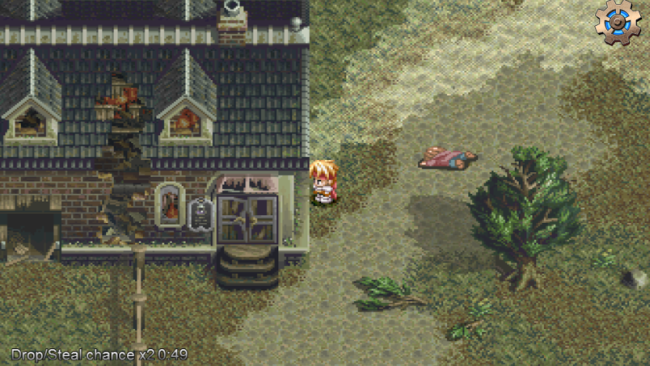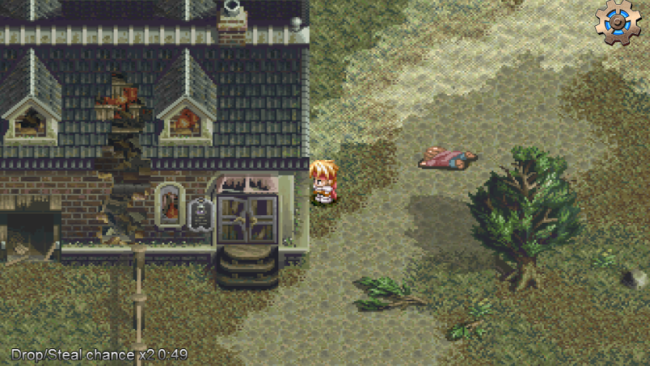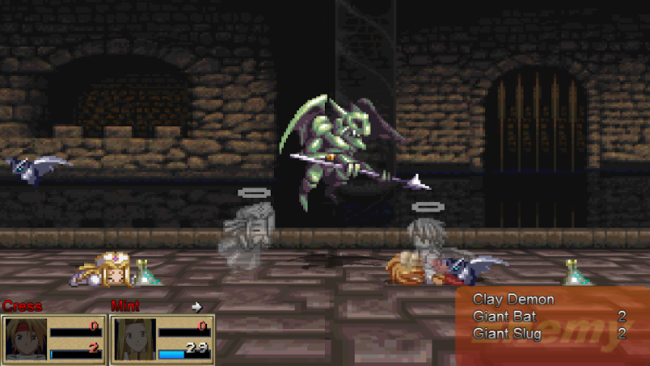- Wondering how to get Monopoly GO! free rolls? Well, you’ve come to the right place. In this guide, we provide you with a bunch of tips and tricks to get some free rolls for the hit new mobile game. We’ll …
The BEST Roblox Games of The Week – Games You Need To Play!
By Sho Roberts
Our feature shares our pick for the Best Roblox Games of the week! With our feature, we guarantee you'll find something new to play!All Grades in Type Soul – Each Race Explained
By Adele Wilson
Our All Grades in Type Soul guide lists every grade in the game for all races, including how to increase your grade quickly!Best Roblox Horror Games to Play Right Now – Updated Weekly
By Adele Wilson
Our Best Roblox Horror Games guide features the scariest and most creative experiences to play right now on the platform!
Tales of Phantasia Review
Free-to-play mobile titles tend to make traditional game fans furious, and when you come across a hair-pulling experience like Namco Bandai’s Tales of Phantasia, it admittedly becomes hard to defend the controversial formula.
Tales of Phantasia is a 16-bit classic action / RPG that was a huge hit in Japan, but has had a limited Western release since its debut on the Super Famicom (Super Nintendo). The original game received a fan translation that takes some creative liberties with the story and its characters (think unwarranted profanity – lots of it), and a poor Game Boy Advance remake, but otherwise, English-speakingfans will have to make do with Tales of Phantasia for mobile. What a shame, then, that Namco considers this poorly-constructed adaptation a worthy ambassador for newcomers to the series.
Tales of Phantasia is free to download, which should rightfully set off some warning bells. How does the free-to-play formula even work in this instance?
The answer: It doesn’t work. This is a 16-bit RPG through-and-through, right down to the “orphaned hero” storyline. You grind enemies for experience, grow in levels, and buy better monster-slaying equipment. That’s fine – except Namco Bandai has thrown in optional purchases like orbs that revive you when you die.
The problem with making a title like Tales of Phantasia free-to-play is that you have no idea if the game is playing fair. The mobile iteration is apparently a port of a Japanese PSP re-release, and to hear the tittle-tattle from series fans on message boards and the App Store, the mobile port allegedly jacks up the difficulty, reduces item drops, and even removes save points to goad players into buying resurrection orbs and other boosters.

What a Phantastic mess
Free-to-play mobile titles tend to make traditional game fans furious, and when you come across a hair-pulling experience like Namco Bandai’s Tales of Phantasia, it admittedly becomes hard to defend the controversial formula.
Tales of Phantasia is a 16-bit classic action / RPG that was a huge hit in Japan, but has had a limited Western release since its debut on the Super Famicom (Super Nintendo). The original game received a fan translation that takes some creative liberties with the story and its characters (think unwarranted profanity – lots of it), and a poor Game Boy Advance remake, but otherwise, English-speakingfans will have to make do with Tales of Phantasia for mobile. What a shame, then, that Namco considers this poorly-constructed adaptation a worthy ambassador for newcomers to the series.
Tales of Phantasia is free to download, which should rightfully set off some warning bells. How does the free-to-play formula even work in this instance?
The answer: It doesn’t work. This is a 16-bit RPG through-and-through, right down to the “orphaned hero” storyline. You grind enemies for experience, grow in levels, and buy better monster-slaying equipment. That’s fine – except Namco Bandai has thrown in optional purchases like orbs that revive you when you die.
The problem with making a title like Tales of Phantasia free-to-play is that you have no idea if the game is playing fair. The mobile iteration is apparently a port of a Japanese PSP re-release, and to hear the tittle-tattle from series fans on message boards and the App Store, the mobile port allegedly jacks up the difficulty, reduces item drops, and even removes save points to goad players into buying resurrection orbs and other boosters.
Not having played the original PSP game, I’m unable to verify these claims. However, I can confidently say the mobile adaptation of Tales of Phantasia is not an easy game. Unlike most RPGs, there are few gentle opening battles. You’re fighting for your life right from the beginning, and it’s easy to lose. Fans already familiar with the game should be able to find their way around, but newcomers are going to have a bad time.
The wretched controls don’t help matters. At the time of its initial Super Famicom release, Tales of Phantasia was revolutionary for successfully mixing up action and turn-based RPG mechanics. Airborne enemies attack from up high, whereas ground-bound enemies must be dealt with at eye-level.
In other iterations of the game, the height of an attack is dependent on which button you push. Tales of Phantasia for mobile, however, expects you to tap on different on-screen “zones.” The A-zone is used for ground attacks, the C-zone is for fliers, and so on.
Unsurprisingly, the differentiation between zones is mushy. Worse, you need to select which enemy to attack via an on-screen menu. The menu also tends to get in the way of the action when you’re tapping for your life, so you often wind up going after another baddie when you’re in the thick of an important fight. It’s a terrible system. Why can’t you simply tap on an enemy you want to hit? Why can’t you swipe upwards for an aerial attack? The whole experience feels slapped-together.
Square-Enix admittedly ignites a lot of controversy when it releases one of its classic games for $9.99 or $14.99. But there’s no denying the peace of mind that comes with playing a game that’s a full package. There’s never any doubt that if you lose to a boss, you lost fair and square, not because the publisher wants you to make a 99-cent purchase.
Worst of all, Tales of Phantasia deserves so much better. Fans mention its name in the same breath as legendary RPGs like Chrono Trigger and Final Fantasy VI for a reason. But as long as the West only has this mobile mess as a modern reference, we’ll never fully comprehend that reason.

The good

The bad
More articles...
Monopoly GO! Free Rolls – Links For Free Dice
By Glen Fox
Wondering how to get Monopoly GO! free rolls? Well, you’ve come to the right place. In this guide, we provide you with a bunch of tips and tricks to get some free rolls for the hit new mobile game. We’ll …The BEST Roblox Games of The Week – Games You Need To Play!
By Sho Roberts
Our feature shares our pick for the Best Roblox Games of the week! With our feature, we guarantee you'll find something new to play!All Grades in Type Soul – Each Race Explained
By Adele Wilson
Our All Grades in Type Soul guide lists every grade in the game for all races, including how to increase your grade quickly!Best Roblox Horror Games to Play Right Now – Updated Weekly
By Adele Wilson
Our Best Roblox Horror Games guide features the scariest and most creative experiences to play right now on the platform!








 “
“ “
“ “
“